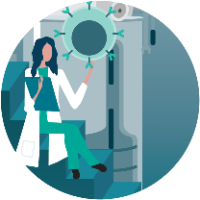The path to PAT: the role of process analytical technologies in advancing CAR-T therapy production
Cell & Gene Therapy Insights 2025; 11(4), 433–438
DOI: 10.18609/cgti.2025.052

This article is part of our ‘Rising Stars’ series, giving a platform to the emerging leaders of the sector. In this series, we share the perspectives of fledgling thought-leaders, chosen by our Editorial Advisory Board members as future stars in their field.
John Moscariello, Chief Technical Officer at Neuvogen Therapeutics, had this to say about his Rising Star nominee:
“Almost immediately upon the approval of the first gene-modified cell therapy products, process developers asked how we can make the product cheaper. While this emphasis has led to significant advances in automation, many people have missed what I think is a more impactful question—how can we make products with better clinical outcomes? Sarah Rajani is the industry-leader in developing adaptive cell therapy processes in which real-time measurements of cell attributes can be used to change process conditions. Published literature has shown that clinical outcomes can correlate to specific ranges of critical quality attributes and Sarah’s work has the potential to change the manufacturing process to ensure those critical quality attributes are within those ranges. Sarah brings innovation, inclusion, and passion to this multifunctional challenge that can make a significant impact on patients using gene-modified cellular therapies.”

